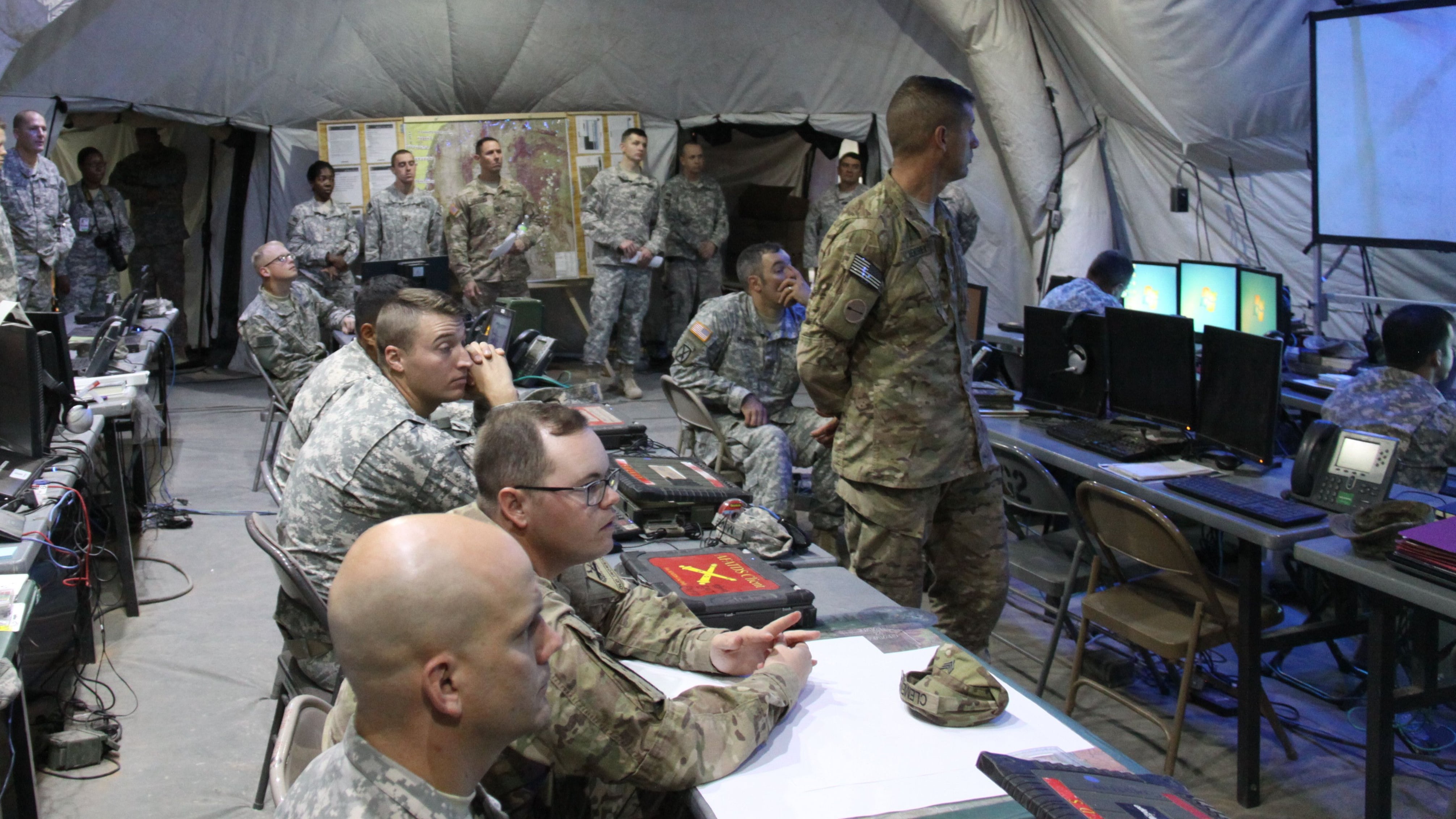HAVRE DE GRACE, Md. — Mobile command posts dot the battlefield. On-the-move units connect with new commercial satellite constellations but automatically pivot to other communications routes if interrupted by an adversary. Soldiers and systems on the ground communicate with waveforms that mask their locations while receiving up-to-date battlefield data to help make decisions.
That’s what the Army wants its battlefield network to look like by 2025 — a network that is more expeditionary and mobile but can pass and process massive amounts of data at speeds the Army will need in coming decades. It’s all part of building a network that can enables Joint All-Domain Command and Control, the Pentagon’s future war-fighting concept in which sensors and shooters are connected.
The Army wants to deliver on that vision through its third iteration of tactical network tools, known as Capability Set ’25. The service’s tactical network team, made up of the Network Cross-Functional Team and its acquisition arm — Program Executive Office Command, Control, Communications-Tactical — rolls out the new network tools every two years.
“We’re going to take … JADC2 from concept to reality by 2025,” Col. Rob Ryan, acting director of the Army’s Network Cross-Functional Team, said recently at the Army network’s sixth technical exchange meeting with industry.
The terms automated and protected provide the major theme of Capability Set ’25, which is merely in early planning stages. Automated network tools allow for faster data processing speeds and quicker decision-making by commanders. The “protected” piece of the new capability set focuses on delivering secure tools and communications that can withstand enemy interference.
To guard the location of command posts and soldiers, the Army needs advanced networking waveforms for Capability Set ’25 that have a low-probability intercept/low-probability detect to reduce electronic signature to hide from adversaries from the brigade level down to platoons.
“From a commander’s perspective looking at his command post in the field, right now we emanate from every system we’ve got,” said Brig. Gen. Charles Masaracchia, director of the Army Mission Command Center of Excellence. “There’s no ability to mask or hide.”
The need to reduce the electromagnetic signature around soldiers and command posts is so high, according to Wayne Schoonveld, the acting chief of the tactical communications division at the C5ISR Center, that he said the service is willing to sacrifice some level of bandwidth in order to reduce that electromagnetic output.
Other technologies at the core of the Army’s future tactical network are new commercial satellite constellations in low Earth orbit and medium Earth orbit. LEO and MEO satellite constellations will provide soldiers communications options that allow for higher throughput and reduced latency. While Capability Set ’23 has limited LEO and MEO, the Army tactical network team plans for those constellations to be more fully mature in the Capability Set ’25 timeframe.
According to CS25 documents, the Army wants LEO and MEO capabilities to be available to soldiers at-the-halt and on-the-move, which will require ruggedized terminals, as the service works toward an increasingly mobile command post that can move throughout the battlefield. The service is also looking for a higher amount of SATCOM connections on the battlefield, with virtualized waveforms being a top requirement for ensuring security.
But with multiple constellations to use, said the Army needs a next-generation tactical terminal that can manage communicating with several constellations, according to Schoonveld.
“One of the challenges we see with CS25 is that it will be extremely difficult to have to buy kits to manage each of those constellations,” he said. “We want to be able to unify the management of those constellations and use that bandwidth collectively as like a pool so that we can provide resiliency through diversity.”
The Army also wants to automate its communication pathway’s PACE — primary, alternate, contingency, and emergency — plans in Capability Set ’25 so if one communications route is interfered with, the system automatically chooses the unblocked route.
“One of the things we’re trying to do in that effort is use machine learning techniques to help the computing devices that have to manage these multiple transports do it in a smart way,” Schoonveld said. “We are working on some reinforcement learning algorithms. But we would be very interested ... if you [industry] are looking at or working on algorithms — especially lightweight-type algorithms — that can help provide a network situational understanding and help make smart routing decisions.”
Capability Set ’25 will also include a hybrid tactical cloud architecture that will provide soldiers with access to data on the battlefield, as well as common data management fabric that’s available from the division level down to platoon.
The tactical network team wants data fabrics to be available “at every echelon going down as far as we can to enable decision-making at every level,” said Donald Coulter, a senior science and technology adviser for the Network Cross-Functional Team.
Additionally, the Army expects to automate its cyber defenses to be prepared against machine learning-enabled digital attacks, Coulter said.
Tools delivered in Capability Set ’23, which just passed preliminary design review and is focused on increasing network resiliency, will evolve to be more automated and protected to fit the tactical network of 2025, Army documents showed.
Andrew Eversden covers all things defense technology for C4ISRNET. He previously reported on federal IT and cybersecurity for Federal Times and Fifth Domain, and worked as a congressional reporting fellow for the Texas Tribune. He was also a Washington intern for the Durango Herald. Andrew is a graduate of American University.








